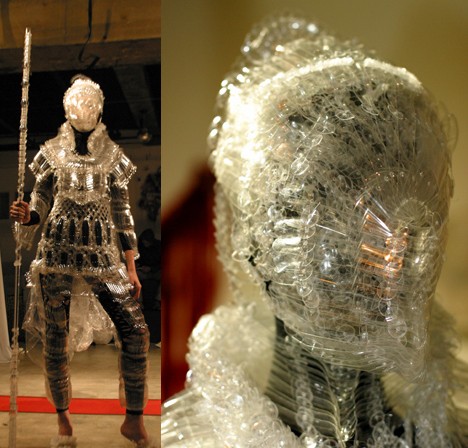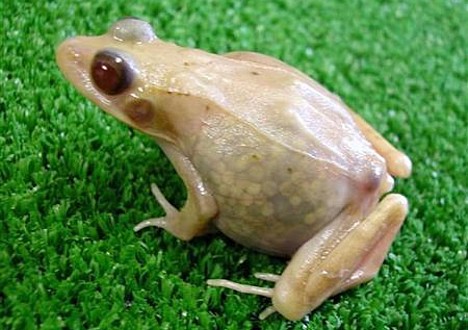
Researchers from the Nara Institute of Science and Technology have developed a biotech-based process for creating ultrathin computer memory. The process, which uses a protein commonly found in mammals, allows memory to be built on thinner substrates because it eliminates the need for high-temperature processing, and it could lead to significantly smaller and thinner computers in the near future, suggest the researchers.
Computer memory typically consists of millions of circuit elements, known as memory cells, which are made of metal and arranged on a silicon substrate. Because the manufacturing process involves temperatures in excess of 1,000 degrees Celsius (1,832 degrees Fahrenheit), the substrate must have a high heat resistance, making thin materials with low heat resistance, such as glass and plastics, unsuitable. However, by using ferritin -- a globular protein complex that stores iron inside its hollow spherical structure, and which is commonly found in the bodies of mammals -- the research group developed a way to arrange metal memory cells on substrates without heat, allowing for the use of thinner substrate materials.
In this new method, ferritin containing metal molecules is applied to a substrate and allowed to self-assemble into a high-density, ordered arrangement. The ferritin is then irradiated with UV light, which completely destroys the protein and leaves behind tiny metal deposits on the substrate. In this way, the researchers bypassed the need for high-temperature processing, allowing for the creation of ultrathin memory chips that measure less than 1 micron in thickness.
The researchers, who happen to be fans of the popular Detective Conan (a.k.a. "Case Closed") series of manga and anime, say their success marks a major step forward in the development of ultrathin computers that, if coupled with ultrathin displays, could one day be used in devices like the high-tech eyeglasses that appear in Detective Conan. The Detective Conan series, which is authored by Gosho Aoyama, centers around Shin'ichi Kudo ("Jimmy Kudo" in the US version), a young detective that has been transformed into a prepubescent boy who goes by the alias of Edogawa Conan and who is armed with an array of high-tech gadgets like computerized eyeglasses, a voice-changing bow tie, and power-boost sneakers.
Research team leader and electronics engineering professor Yukiharu Uraoka says, "We are well on the way to developing computers built on thin films that can be integrated into eyeglass lenses or into clothing. Conan's eyeglasses are no longer a dream."
In response to the development, Gosho Aoyama, Conan's creator, says, "It is a great thrill to see an idea on the pages of a manga become a reality. Next, if possible, I'd like someone to develop power-boost sneakers."
[Source: Yomiuri]






 NEC Corporation has teamed up with Aida Engineering to develop a briefcase-sized DNA analysis system that allows police to perform comprehensive DNA testing at crime scenes in as little as 25 minutes. NEC is calling the device the world's first portable all-in-one DNA analysis system able to handle all DNA testing processes from extraction to analysis. Designed specifically for law enforcement officials and planned for release in 2008, the system measures 50 x 40 x 20 cm (20 x 16 x 8 in.), making it small enough to be carried to crime scenes or other locations where quick DNA analysis is required.
NEC Corporation has teamed up with Aida Engineering to develop a briefcase-sized DNA analysis system that allows police to perform comprehensive DNA testing at crime scenes in as little as 25 minutes. NEC is calling the device the world's first portable all-in-one DNA analysis system able to handle all DNA testing processes from extraction to analysis. Designed specifically for law enforcement officials and planned for release in 2008, the system measures 50 x 40 x 20 cm (20 x 16 x 8 in.), making it small enough to be carried to crime scenes or other locations where quick DNA analysis is required. 






